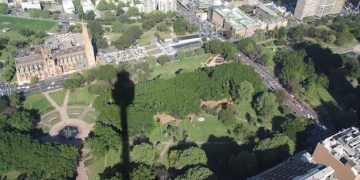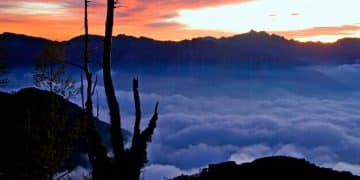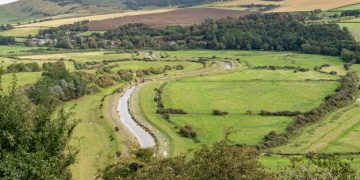Beyond Machu Picchu: Unearthing Peru’s Archaeological Secrets in 2025
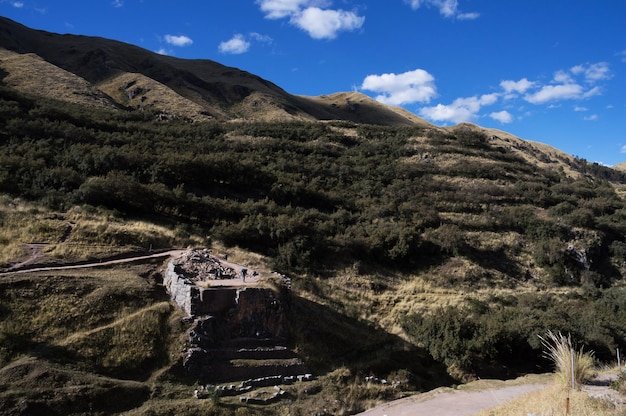
Beyond Machu Picchu: Discovering Peru’s Hidden Archaeological Gems in 2025 unveils the country’s lesser-known historical treasures, offering unique travel experiences beyond the iconic Incan citadel, enticing adventurous travelers to explore ancient civilizations and stunning landscapes.
Peru, a land synonymous with the majestic Machu Picchu, holds a treasure trove of archaeological wonders waiting to be discovered. In 2025, venture beyond Machu Picchu: Discovering Peru’s Hidden Archaeological Gems in 2025, and uncover the secrets of ancient civilizations nestled within breathtaking landscapes.
Unveiling Peru’s Rich Archaeological Heritage
Peru’s history extends far beyond the Inca Empire, encompassing millennia of diverse cultures, each leaving their indelible mark on the land. Exploring these sites allows a deeper understanding of Peru’s complex past and the ingenuity of its ancient inhabitants.
From the coastal deserts to the high Andes, Peru’s archaeological sites offer a fascinating glimpse into the lives, beliefs, and achievements of pre-Columbian societies. Many of these sites remain relatively untouched by mass tourism, providing a more authentic and intimate exploration experience.
The Allure of Undiscovered Sites
While Machu Picchu draws crowds from around the globe, numerous other archaeological sites in Peru offer equally captivating experiences with fewer visitors. These hidden gems provide a sense of discovery and adventure, allowing travelers to connect with history in a more profound way.
- Choquequirao: Often referred to as Machu Picchu’s “sister city,” Choquequirao is a sprawling Inca site perched high in the mountains, offering stunning views and challenging hikes.
- Kuelap: This pre-Inca fortress, built by the Chachapoyas culture, boasts massive stone walls and intricate architecture, providing insights into a civilization that thrived in the cloud forests of northern Peru.
- The Nazca Lines: These enigmatic geoglyphs etched into the desert floor continue to fascinate researchers and visitors alike, raising questions about their purpose and the advanced knowledge of the Nazca culture.
Discovering Peru’s lesser-known archaeological sites goes beyond simply seeing ancient ruins. It’s about immersing oneself in the history, culture, and natural beauty of a land that has nurtured civilizations for thousands of years.
Choquequirao: Machu Picchu’s Sacred Sister
Choquequirao, meaning “Cradle of Gold,” is an Inca site that rivals Machu Picchu in size and grandeur. Its remote location and challenging access have kept it relatively hidden, making it an ideal destination for adventurous travelers seeking an authentic experience.
Reaching Choquequirao typically requires a multi-day trek through the Apurimac Canyon, a journey that rewards hikers with breathtaking views, diverse landscapes, and encounters with local communities. The site itself features impressive terraces, plazas, and ceremonial structures, offering a glimpse into Inca urban planning and religious practices.

Choquequirao’s archaeological significance lies in its potential to provide further insights into the Inca Empire’s social, political, and economic organization. Ongoing excavations and research continue to uncover new details about the site’s history and its connection to Machu Picchu.
Planning Your Choquequirao Trek
The trek to Choquequirao is a challenging but rewarding experience that requires careful planning and preparation. It’s important to be in good physical condition, acclimatize to the altitude, and pack appropriate gear. Hiring a local guide and mule team can enhance the experience and provide valuable support.
- Best time to visit: The dry season (May to September) offers the best hiking conditions.
- Trek duration: Typically 4 to 5 days, round trip.
- Difficulty level: Moderate to challenging, due to steep inclines and altitude.
Exploring Choquequirao offers a unique opportunity to step back in time and connect with the wonders of the Inca civilization in a pristine and unforgettable setting. It’s a testament to the enduring legacy of a culture that continues to captivate the world.
Kuelap: Fortress in the Clouds
Kuelap, a massive pre-Inca fortress built by the Chachapoyas culture, stands as a testament to the ingenuity and resilience of a civilization that thrived in the cloud forests of northern Peru. Its imposing stone walls and intricate architecture offer a fascinating glimpse into a little-known chapter of Peruvian history.
Located high on a ridge overlooking the Utcubamba Valley, Kuelap is surrounded by lush vegetation and shrouded in mist, creating a mystical and atmospheric setting. The fortress’s strategic location and formidable defenses suggest a society that valued security and territorial control.
Discovering the Chachapoyas Culture
The Chachapoyas, also known as the “Cloud People,” were a unique culture that flourished in the northern Andes from around 800 AD until their conquest by the Inca Empire in the 15th century. They were skilled builders, farmers, and warriors, leaving behind a legacy of impressive archaeological sites and cultural traditions.
Kuelap is the most impressive and well-preserved example of Chachapoyas architecture, showcasing their mastery of stonework and engineering. The fortress’s interior features hundreds of structures, including dwellings, temples, and ceremonial platforms, providing insights into the daily life and social organization of the Chachapoyas people.
- Architectural highlights: The Templo Mayor, a unique circular structure believed to have been used for religious ceremonies; the El Castillo, a massive platform offering panoramic views; and the defensive walls, which reach up to 20 meters in height.
- Accessing Kuelap: A modern cable car provides convenient access to the site, making it more accessible to a wider range of travelers.
- Nearby attractions: Explore the Gocta Waterfall, one of the highest waterfalls in the world, and visit the Leymebamba Museum, home to a collection of Chachapoyas mummies.
Visiting Kuelap and learning about the Chachapoyas culture offers a unique opportunity to delve into the rich and diverse history of Peru, beyond the well-trodden paths of the Inca Empire.
Deciphering the Enigmatic Nazca Lines
The Nazca Lines, a collection of massive geoglyphs etched into the desert floor of southern Peru, remain one of the world’s greatest archaeological mysteries. These intricate figures, depicting animals, plants, and geometric shapes, have captivated researchers and visitors for decades, sparking endless debates about their purpose and creation.
Spanning an area of over 80 kilometers, the Nazca Lines are best viewed from the air, offering a breathtaking perspective on the scale and complexity of these ancient designs. The geoglyphs were created by removing the reddish-brown surface pebbles to reveal the lighter-colored sand beneath, a technique that has preserved them for centuries in the arid desert climate.
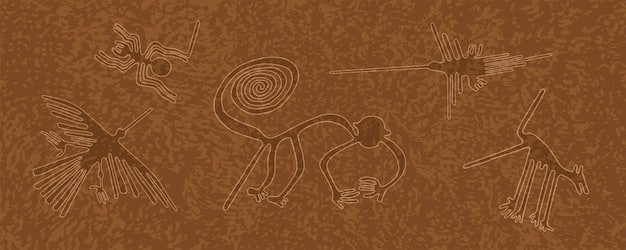
Theories and Interpretations
Numerous theories have been proposed to explain the purpose of the Nazca Lines, ranging from astronomical observatories to religious symbols to irrigation maps. While no definitive answer has been found, the most widely accepted theory suggests that the geoglyphs were related to water rituals and agricultural fertility.
The precision and scale of the Nazca Lines suggest a sophisticated understanding of geometry and surveying techniques, as well as a highly organized society capable of coordinating large-scale projects. The Nazca culture, which flourished in the region from around 200 BC to 600 AD, is credited with creating these remarkable geoglyphs.
Exploring the Nazca Lines offers a unique opportunity to contemplate the ingenuity and creativity of ancient cultures, as well as the enduring mysteries of the past. Whether viewed from the air or explored on the ground, these enigmatic geoglyphs leave a lasting impression on all who encounter them.
- Viewing the Nazca Lines: Aerial tours are the most popular way to experience the Nazca Lines, offering panoramic views and the opportunity to appreciate the full scale of the geoglyphs.
- Ground-based viewing platforms: Several viewing platforms have been constructed along the Pan-American Highway, providing closer views of some of the geoglyphs.
- Nazca culture: Learn more about the Nazca culture by visiting the Antonini Archaeological Museum in Nazca, which displays artifacts recovered from the region.
Exploring the Sacred City of Caral
Caral, located in the Supe Valley north of Lima, is one of the oldest cities in the Americas, dating back over 5,000 years. This ancient metropolis predates the Inca Empire by millennia and offers a fascinating glimpse into the origins of civilization in Peru. The site’s well-preserved pyramids, plazas, and residential areas provide valuable insights into the social, political, and religious life of the Caral civilization.
The discovery of Caral in the 1990s revolutionized our understanding of Peruvian history, pushing back the timeline for the development of complex societies in the region. Caral’s sophisticated urban planning, advanced agricultural techniques, and intricate ceremonial practices demonstrate a high level of social organization and cultural achievement.
The Significance of Caral
Caral’s significance lies in its role as a center of innovation and cultural exchange in the ancient world. The city’s inhabitants developed sophisticated irrigation systems, cultivated a variety of crops, and engaged in trade with other communities along the coast and in the highlands.
The architecture of Caral is characterized by monumental pyramids, circular plazas, and residential complexes, all constructed with meticulously cut stones and adobe bricks. The site’s most impressive structure, the Principal Pyramid, rises to a height of 18 meters and covers an area of over 10,000 square meters.
- Visiting Caral: Guided tours are available at the site, providing insights into the history and significance of the Caral civilization.
- Nearby attractions: Explore the nearby archaeological sites of Aspero and Vichama, which were also part of the Caral civilization.
- Sustainable tourism: Support local communities by purchasing handicrafts and participating in eco-tourism activities in the Supe Valley.
Exploring Caral offers a unique opportunity to travel back in time and witness the dawn of civilization in the Americas, reminding us that Peru’s rich history extends far beyond the Inca Empire.
Planning Your Archaeological Adventure in Peru
Embarking on an archaeological adventure in Peru requires careful planning and preparation. Researching the sites you wish to visit, understanding the local conditions, and respecting the cultural heritage are essential for a rewarding and responsible travel experience.
Peru is a country of incredible archaeological diversity, and you should research properly how you will invest your time there.
Working with reputable tour operators can ensure a smooth and informed trip
Tips for Responsible Travel
As visitors to Peru’s archaeological sites, we have a responsibility to preserve these treasures for future generations. By following a few simple guidelines, we can minimize our impact and contribute to the sustainable tourism practices.
- Respect the sites: Follow the instructions of your guide, stay on designated paths, and avoid touching or damaging any of the structures or artifacts.
- Support local communities: Patronize local businesses, hire local guides, and purchase handicrafts to help support the local economy.
- Minimize your environmental impact: Pack out all trash, use reusable water bottles.
By embracing responsible travel practices, we can ensure that Peru’s rich archaeological heritage remains a source of wonder.
Key Point 🔑
Brief Description 📝
🔑 Machu Picchu Alternative
Explore Choquequirao, an Inca site that rivals Machu Picchu in size and grandeur.
☁️ Fortress in the Clouds
Discover Kuelap, built by the Chachapoyas culture, in the cloud forests of northern Peru.
🌀 Enigmatic Desert
Unravel the mystery of the Nazca Lines and the Nazca civilization.
🏛️ 5,000 Year Old City
Visit Caral, one of the oldest cities in the Americas.
Frequently Asked Questions
What are some alternatives to Machu Picchu for archaeological tourism in Peru?
Discover Choquequirao, Kuelap, Nazca Lines and Caral as alternatives to popular Machu Picchu for archaeological tourism in Peru.
What is the best time of year to visit archaeological sites in Peru?
The best time to explore archaeological sites in Peru is during the dry season, which typically runs from May to September.
Are guided tours necessary for visiting these archaeological sites?
While it’s possible to visit these sites independently, guided tours can greatly enhance your experience.
What should I pack when visiting archaeological sites in Peru?
Pack items for varied weather conditions. Always bring sun protection, comfortable hiking shoes and light clothing
How can I contribute to responsible and sustainable tourism in Peru?
Respect sites, support local communities and reduce your environmental impact when exploring in Peru.
Conclusion
As you plan your trip to Peru in 2025, consider venturing beyond the iconic Machu Picchu and exploring the country’s wealth of hidden archaeological gems. From the mountaintop citadel of Choquequirao to the mysterious desert lines of Nazca, these ancient sites offer a deeper understanding of Peru’s rich history and diverse cultural heritage.
Read more content

